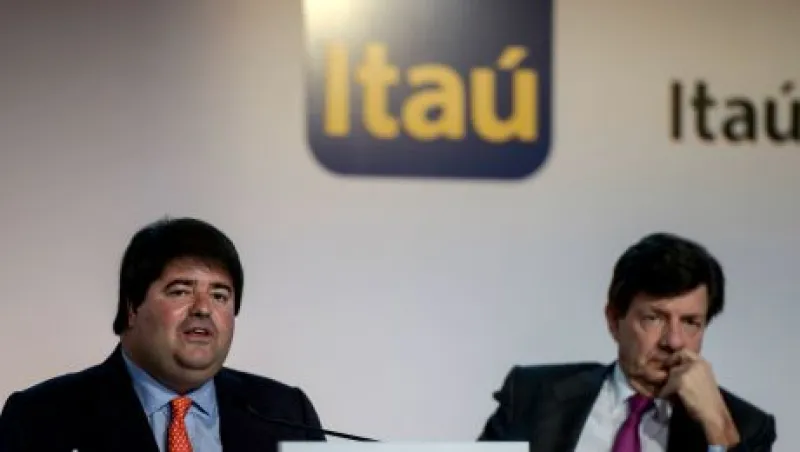Buy- and sell-side analysts have increasingly sought access to the men and women running Latin American companies — especially those based in Brazil — as more and more investors look to emerging markets in the hope of finding higher returns than those offered in developed economies. While such traditional modes of corporate access as conferences, nondeal road shows and small group meetings are still in demand, Latin America has seen an uptick in investor relations departments’ hosting so-called analyst days – proprietary conferences where management teams meet with analysts and shareholders.
Itaú Unibanco Holding, for instance, began offering an annual invitation-only event for sell-side researchers and qualified investors five years ago. For years the São Paulo–based financial services giant had been hosting a conference open to individual investors as well as institutions but decided to launch its periodic Investors’ Day in response to growing demand for such events.
“The more you do it, the more people want it,” says Marcelo Kopel, the bank’s IR director. “That’s the reality.” Even as the company maintains a steady schedule of corporate access events, including road shows and meetings with investors, Kopel stresses that analyst days are a unique opportunity for those tracking the company to see its executives interact as a team and discuss their long-term strategy.
Sell-side analysts and asset managers see the value. Itaú Unibanco takes top honors in the Financials/Banks sector on Institutional Investor’s inaugural ranking of Latin America’s Best Analyst Days.
Which other corporate events do financial professionals most look forward to attending? To find out we asked buy- and sell-side participants in the 2015 Latin America Executive Team survey — our exclusive annual ranking of the region’s best corporate leaders and investor outreach programs — to tell us which entities they cover host the most constructive analyst days. We received responses from more than 740 investment professionals at 276 financial services firms. Respondents from the buy side work at institutions that collectively manage $220 billion in Latin American equities.
Itaú Unibanco’s Investors’ Day, which is hosted at the firm’s headquarters, usually starts with brunch, where participants get their first chance to mingle with senior management. Often the chief executive officer, chief financial officer, chief risk officer and general directors are in attendance and give short presentations after brunch, each with its own questions-and-answer session and interrupted only by a single coffee break for further networking opportunities. The day concludes with a presentation from the CEO and a general Q&A discussion, but the IR team sometimes gives tours of the facilities to groups that are less familiar with the bank. The event draws an average of 150 attendees, including qualified media.
The get-together, generally held after the release of quarterly reports, offers financial professionals a chance to explore company strategy in more detail and address concerns not covered on the earnings calls. With Brazil’s economy slowing and its government embroiled in a corruption scandal, Kopel points to two issues that executives are spending more time discussing with investors: inflation and the fiscal budget. “We typically brush through the macro landscape and take some questions on that,” he explains. “Then we move into how this translates into our operating performance.” Illuminating management’s strategy in the context of overarching macroeconomic themes, Kopel insists, is the way to meet attendees’ expectations.
Luís Fernando Oliveira, IR manager for Jaraguá do Sul, Brazil–based electric motor maker WEG, agrees that the discussion should focus on long-term strategy and industry trends. “Anybody who comes trying to find out what’s going to happen next quarter is going to notice their mistake very quickly,” he jokes.
For example, WEG’s large client base in the oil and gas and mining industries left analysts wondering about the impact of the recent crash in commodities prices on the business. In response, at May’s WEG Day the company’s executives discussed plans for diversifying into more commercial areas and expanding operations abroad, according to Oliveira. “Investors were definitely more confident after seeing the presentations than they were before,” he reports. This approach clearly won over the analysts; WEG captures first place in the Capital Goods sector.
This year marks WEG’s third annual analyst day, which convenes at its headquarters. On average about 40 buy- and sell-side equity analysts attend, arriving the night before for an informal networking event over cocktails. In the morning participants listen to presentations by company officials before embarking on a tour of WEG’s on-site factory, which is the largest integrated motor manufacturing facility in the world. “In this kind of company, field trips continue to be very important,” says Oliveira, contrasting industrial companies with those in the finance or service industries. “You cannot substitute actually seeing the operations with just meeting executives in a nice hotel.”
Although the structure remains unchanged, WEG chooses a different theme for each new analyst day. “People who return year after year find a different event every time,” says Oliveira. This year’s event focused on international operations. Managers from the company’s production facilities attended and spoke to analysts, explaining global opportunities and relating anecdotes about interactions with clients. The CEO delivered the final presentation.
In addition to building investor confidence in chief executives and their objectives, these gatherings enable upper management to learn about the market’s expectations and concerns from the questions that analysts’ ask. “It’s almost like doing a perception study live,” Oliveira explains.
However, this opportunity is not limited to analyst days. All forms of corporate access afford a chance to gauge the market, notes Maristela Seiler, IR manager at fuel and chemicals conglomerate Ultrapar Participações. “Throughout the year, at conferences and road shows and other meetings, we build our opinion of the market’s perception about the company,” she says. “But we always say the company must face the analyst day as a special day, where we can promote a quality dialogue between senior management and market analysts.”
A special day indeed. The São Paulo–based concern, which holds its analyst day every November following its third quarter earnings release, takes top honors in the Oil, Gas & Petrochemicals sector.
Ultrapar typically rents a hotel ballroom in its home city to accommodate some 150 guests, of which ten to 15 are sell-side analysts, 20 to 30 are individual investors and the rest are money managers and other financial professionals. The event commences with a lunch, followed by speeches from the CEO and CFO. However, other company officials and representatives are on hand to meet with attendees as well. Presentations are broadcast live over the Internet via a conference call line, and Seiler highlights the importance of good infrastructure for events of this kind.
About three years ago her team ran into trouble with the live broadcast, when listeners’ questions were unable to be heard through the conference call. Seiler’s quick-thinking crew began taking questions through e-mail and webcast and relaying them to the executives. “You don’t want anybody talking about the infrastructure,” she says. “It’s fine if they like it, but if they don’t, they will talk about it.”
Just goes to show that some minor setbacks won’t bar an organization from being perceived as hosting a memorable analyst day. Even though these events come in a variety of sizes and formats, a few elements seem crucial to all: insightful presentations from members of senior management, relevant topics — and plenty of preparation.






